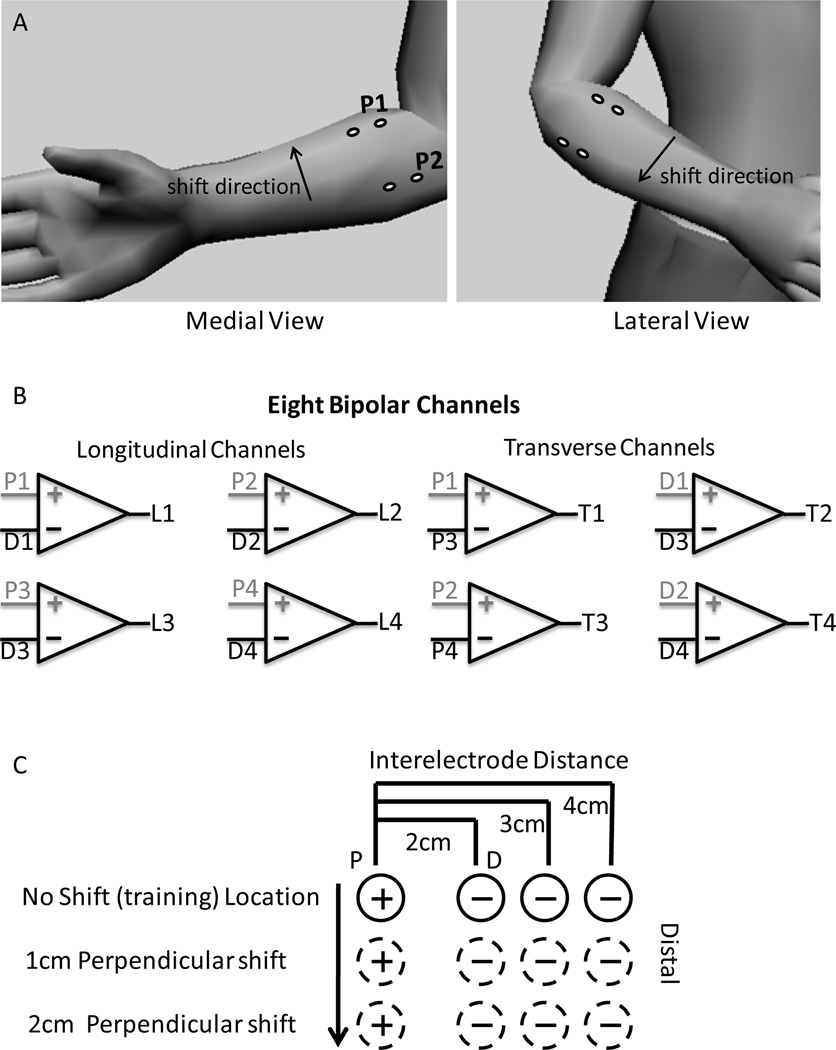Fig. 1.
Electrode pole placement and channel configuration. A. The four control sites were evenly spaced around the forearm. P1–P4 refer to the four proximal poles and D1–D4 refer to the four distal poles. B. From the four control sites, eight recording channels were formed: four longitudinal channels (L1, L2, L3, L4) and four transverse channels (T1, T2, T3, T4). Longitudinal channels were a differential of the proximal and distal pole at a single control site. Transverse channels were a differential of a pole from one control site and the corresponding pole from the control site on the opposite side of the arm. C. Three interelectrode distances were tested for longitudinal channels: 2 cm, 3 cm, and 4 cm. For each interelectrode distance and condition tested in this study, the classifier was tested at the no shift location, 1 cm perpendicular shift, and 2cm perpendicular shift.

